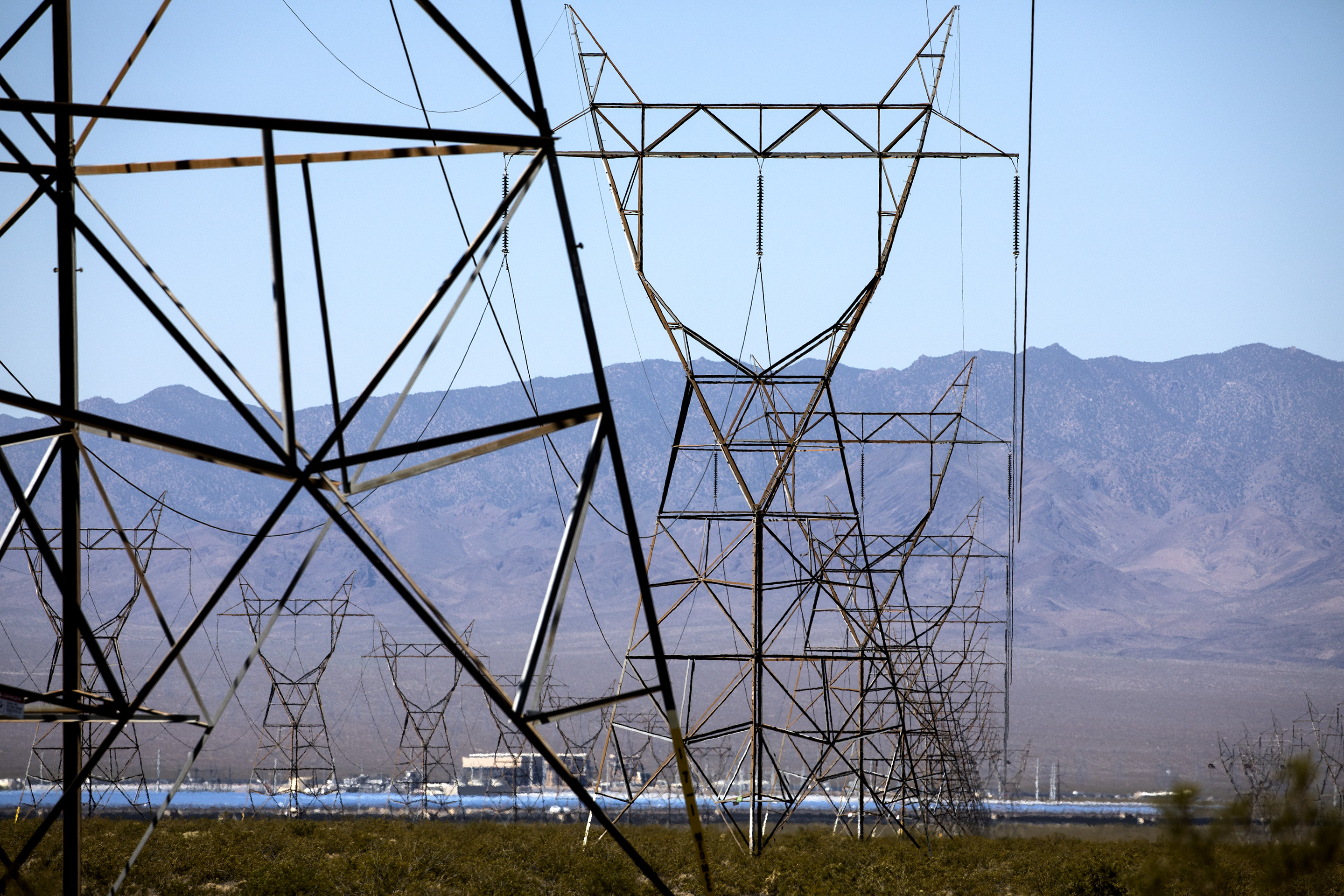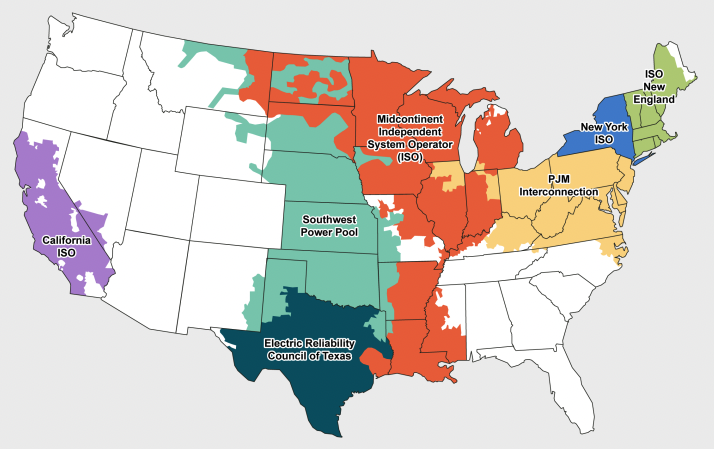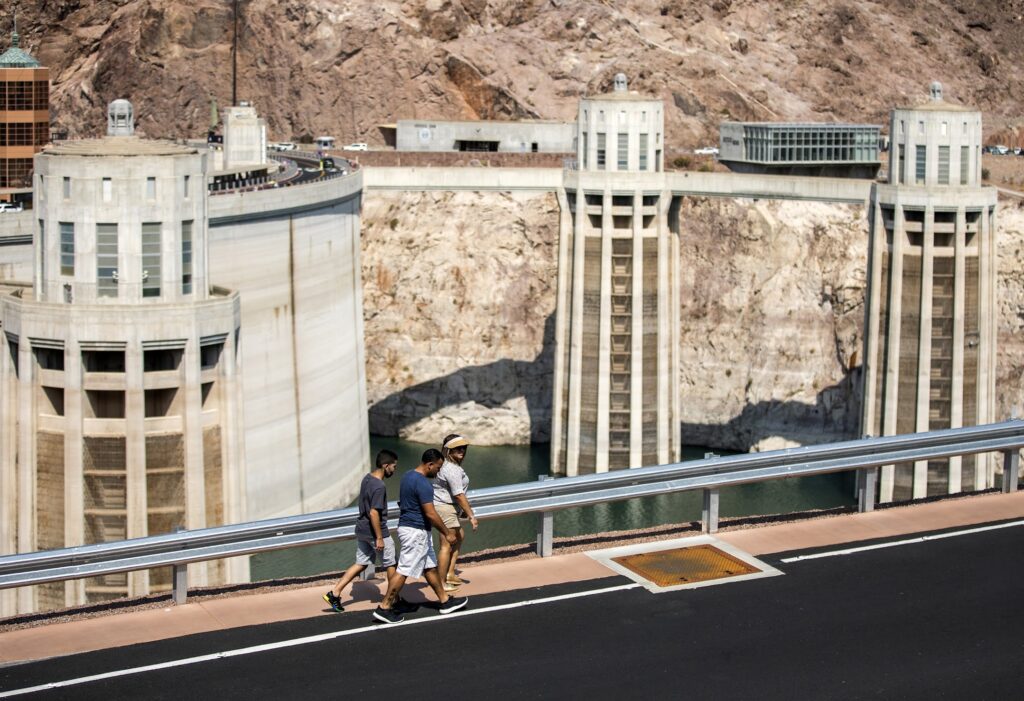Nevada is taking steps toward a Western electric grid. What will it look like?

Good morning, and welcome to the Indy Environment newsletter.
ICYMI: Our multimedia editor Joey Lovato talked earthquakes on the Indy’s podcast this week.
As always, we want to hear from readers. Let us know what you’re seeing on the ground and how policies are affecting you. Email me with any tips or suggestions at [email protected]
To get this newsletter in your inbox, subscribe here.
The end goal is clear: A more efficient and organized regional electric grid.
In October, electric utilities representing states across the West announced plans to examine a path forward to do that. The utilities, including NV Energy, disclosed the formation of an informal working group (the Western Markets Exploratory Group) to explore what a future grid might look like. How would energy sales work across borders? Clean energy policies? Transmission lines?
On the surface, this might seem quite trivial. But the reality is that our electric grid in the West is very complex, sometimes for good reason and sometimes for the worst, in ways that could add costs and undermine national goals of moving away from fossil fuels. Every time the lights go on in a neighborhood, there is an intricate set of systems and transactions that occur behind the scenes to match energy with the demand — and to ship it from Point A to Point B.
In most regions of the United States, the electric grid is organized through what are known as Regional Transmission Organizations (RTO) or Independent System Operators (ISO). Experts describe these organizations, at their core, as platforms that facilitate the sharing of resources — power markets and transmission — across geographical areas. The idea is that, by pooling resources, energy costs go down and resources can be dispatched in a more efficient manner.
Today, if you look at a map, there are two areas that stand out as notable exceptions, lacking a regional organization. The first is the Southeast and the second is the West (California has an ISO that includes a small chunk of Nevada, but by and large, most of our grid is fragmented).

It’s not fragmented in the sense that everyone is always divided on what to do. In fact, there is a lot of collaboration across the Western grid, especially in the last decade with systems that aim to better distribute power. But it’s fragmented in the sense that things remain relatively siloed off.
NV Energy is responsible for balancing power needs and transmission in Nevada. Other utilities or organizations are responsible for this elsewhere in the West. In fact, there are more than 35 decision-makers, or “balancing authorities,” that ensure reliability in different parts of the West.
That is the backdrop looming over the effort for regionalization in the West, an effort that has been gaining momentum over the past few years. Last year, both Nevada and Colorado passed legislation directing utilities to join a regional market by 2030. Sen. Chris Brooks (D-Las Vegas) helped write the provision in Nevada as part of an omnibus energy bill in the Senate, SB448.
The provisions in Nevada and Colorado, he said, helped pressure utilities to come to the table through the Western Markets Exploratory Group, in addition to setting up a framework for how to move forward. Brooks is chairing a task force set up through the legislation. Its aim will be to identify Nevada’s priorities and look at different options for joining a regional electric market.
“It really all boils down to governance,” Brooks said. “We as a state have carbon goals that might be different from other states. We have resources that are definitely different from other Western states. And we have a [demand] profile that is different from other Western states.”
But, Brooks argued, there is a recognition that regionalization could benefit all states through lower rates for consumers, better distribution of renewable resources and greater grid reliability.
The big sticking point: Getting there is complex, with many layers of government involved.
States might be directing utilities to join a regional market. But investor-owned utilities are the ones discussing what that would look like through their informal Western Markets Exploratory Group. Then there are state regulators that oversee those utilities; their mandate is to balance the interests of customers and shareholders. They might be reticent about giving up control.
At the same time, governors and lawmakers across the West approach energy through different lenses: Some are more focused on climate change goals than others. There are also existing contractual regional efforts and relationships already in place to distribute power across the grid. How do those fit into this? Finally, federal regulators will have to approve of a regional market.
Discussions in Nevada and elsewhere are looking at all of that (there is a seemingly endless list of interstate working groups, with lengthy acronyms, that are studying what might work best).
“The key is really letting states continue to set their own energy policy,” said Sarah Steinberg, an analyst with Advanced Energy Economy, an association of businesses supporting clean energy. “All Western states want to maintain independence but want low-cost reliable energy.”
Steinberg argued that a regional market could be a way of getting more low-cost energy in a way that also helps states, such as Nevada, meet their renewable goals. A common example: In a more regional market, Nevada might not have to burn fossil fuels and turn on a natural gas plant when demand peaks but could instead import renewable power from elsewhere.
The question is how to get there from a structural standpoint. An effective regional market would mean putting at least some authority in the hands of a regional operator. Instead of having many decision-makers (the current situation), you would have an operator taking a more regional approach to balancing energy needs and delivering the necessary power to customers.
What does that look like? How do you achieve the benefits of regionalization without losing the autonomy that comes with running separate grid systems? And who will this operator be?
David Bobzien, the director of the Governor’s Office of Energy, said it will be important for the task force to take up these issues. But he sees Nevada as a central node in a regional market.
“That's ultimately the question before us,” Bobzien said this week. “[The task force is] a strong opportunity for Nevada to chart its own destiny with regards to how we answer that question.”
For a long time, there was one primary contender to operate a regional market: The California Independent System Operator (CAISO). Already, it manages about a third of the electric load that runs through the region, according to its website. It also has spearheaded regional efforts to better balance power between utilities. NV Energy and others participate in what is known as the Electric Imbalance Market (EIM). It helps utilities locate lower-cost power across the grid.
NV Energy has been participating in the program since 2015 (the utility says it has benefited its customers to the tune of $151 million over that time) and it is open to a broader regional market.
“NV Energy is supportive of coordinated regional planning and markets,” Jennifer Schuricht, a spokesperson for the state’s largest utility, said in a statement on Wednesday. “NV Energy is actively participating in or monitoring several regional coordination efforts in the West.”
But there have long been concerned about how CAISO is governed and whether its current structure would allow for other utilities to have an equitable say in policy. And others are eyeing the Western market. The Southwest Power Pool (SPP), a regional transmission organization serving the midcontinent, is also looking to expand West with an imbalance market, similar to the EIM, to help utilities locate low-cost power. SPP is also looking at creating an organized Western market, with a “Markets+” option that would allow utilities to retain some control.
At the same time, regional utilities are taking additional steps toward collaboration, even outside the context of a formal market: They are working to coordinate transmission planning, according to a Federal Energy Regulatory Order, and they are looking at coordinating the way in which they measure resource adequacy, a term that describes the ability to meet customer demand.
“I think there is more momentum in the West to do something than there ever has been in the past,” Brooks said in a phone interview on Wednesday. “I think the options have multiplied, and that creates a higher level of complexity of what [a regional market] looks like.”
One of the focuses of the task force will be how to integrate the state’s climate goals with a regional market. Cameron Dyer, a senior attorney with Western Resource Advocates, said a future regional market would only work with a thorough greenhouse gas accounting system. He noted that his group recently published a white paper looking at how to account for emissions.
“One of our main interests is greenhouse gas emission reductions,” Dyer said. “What we see an RTO being able to do is give states within its footprint an opportunity to go faster and farther.”

Here’s what else I’m watching this week:
WATER
“It’s important to focus on what’s going out of Lake Mead, because that has the greatest impact on the [Colorado River] system.” Good in-depth overview from the Water Education Foundation on some of the governance dynamics around current Colorado River negotiations.
- Aspen Journalism’s Heather Sackett looks at how record-low reservoir conditions on the Colorado River set up the conditions that enabled policymakers to quickly develop a management plan, building off of policy that had been considered for a long time.
“A federal agency’s preliminary determination that a proposed water pipeline in southwest Utah would have minimal effects on Nevada has some water activists and hydrologists crying foul,” the Las Vegas Sun’s Jessica Hill writes about a proposed 50-mile pipeline from Pine Valley in western Utah to Cedar City. Groundwater pumping in Pine Valley, a groundwater aquifer that is near the Great Basin National Park, could have an impact in Nevada, activists argue.
Coming up: A workshop series focused on drought in Nevada begins next week.
ENERGY
Many states are pursuing nuclear power to cut greenhouse emissions. From an Associated Press story by Jennifer McDermott this week: “Nevada officials don’t consider nuclear power a viable option because of the failed plan to store the nation’s commercial spent nuclear fuel at Yucca Mountain. Instead, they see potential for energy storage and geothermal energy.”
- In a tiny Wyoming town, Bill Gates bets big on nuclear power. (Associated Press)
Could Congress boost geothermal? POLITICO’s Jonathan Custodio talked with Nevada officials about federal efforts to boost the geothermal industry. The infrastructure bill included $84 million for demonstration projects, the story notes. Geothermal could also get a boost from a renewable tax incentive provision in President Joe Biden’s proposed Build Back Better plan.
Burning Man is pushing back against a geothermal exploration project that could add two power plants near the town of Gerlach and the Black Rock Desert, where the festival is held. The Reno Gazette Journal’s Jenny Kane has the story, and here’s a link to more documents.
- Pilot project aims to convert oil wells into geothermal producers (Think Geoenergy)
“An NV Energy program to expand solar access to low-income Nevadans and disadvantaged businesses is off to a solid start, a program administrator says, and is expected to continue to grow in coming years,” April Corbin Girnus reports for The Nevada Current.
MINING
“The Nevada Mining Association is asking state officials to tweak proposed regulations implementing a new tax on gold and silver mining, including changing the title and ensuring it won’t be applied retroactively,” my colleague Riley Snyder reported last week.
AngloGold eyes Nevada mines: “South Africa’s AngloGold Ashanti (NYSE: AU) (JSE: ANG) expects to start producing gold in Nevada, US, by 2025 at the latest, as the company officially took over Canada’s Corvus Gold (TSX, NASDAQ: KOR) on Tuesday,” Mining.com reports.
i-80 Gold Corp. looks to be a top Nevada gold producer, Elko Daily Free Press reports.
